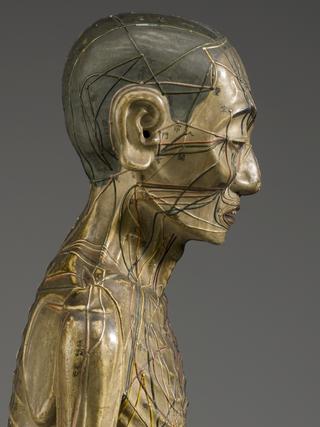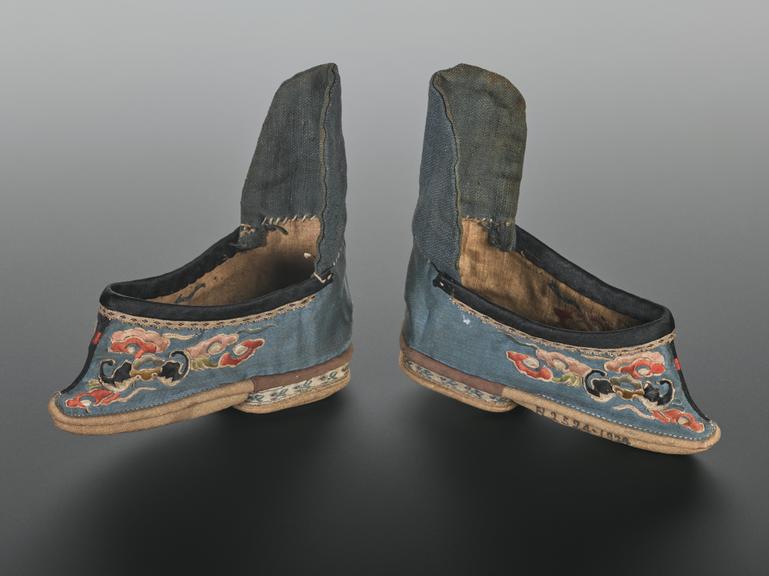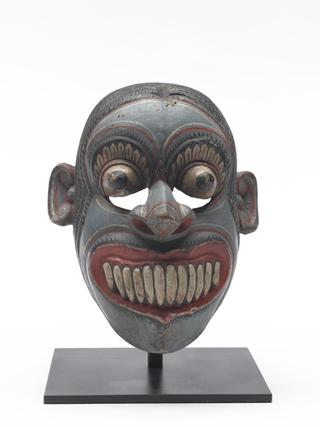






Pair of shoes with low heel and pointed toe, silk uppers, embroidered in silk thread over paper, worn by Chinese lady with bound feet Chinese, 1870-1910
A Chinese lady with bound feet wore these tiny embroidered silk shoes. They measure only 12 cm (4.7 inches) in length. But this was actually considered a large shoe because the ideal size was between three to four inches. The shoes are made of silk thread over paper and have a textile base. They were clearly not designed for wearing outside. The shoes are shown with plaster cast models which illustrate the damage caused by foot-binding (A56883 and A56882).
Foot-binding was a traditional practice that originated among high society women in China, possibly up to 1000 years ago. It involved ‘moulding’ the feet of a young girl, usually aged between three and 11. This artificially restricted foot growth and was achieved by breaking the bones of the feet and manipulating the toes under the arch. The feet were then bound and repeatedly squeezed in to tighter and smaller bindings and shoes over time. The painful practice was associated with beauty, status and marriage eligibility. It eventually spread through all social classes. Foot-binding was outlawed in 1912, but it continued in more rural areas for years afterwards.
Details
- Category:
- Asian Medicine
- Collection:
- Sir Henry Wellcome's Museum Collection
- Object Number:
- A51770
- Measurements:
-
overall: 120 mm x 55 mm x 130 mm, .07kg
- type:
- shoe
- credit:
- Mabbet and Edge




